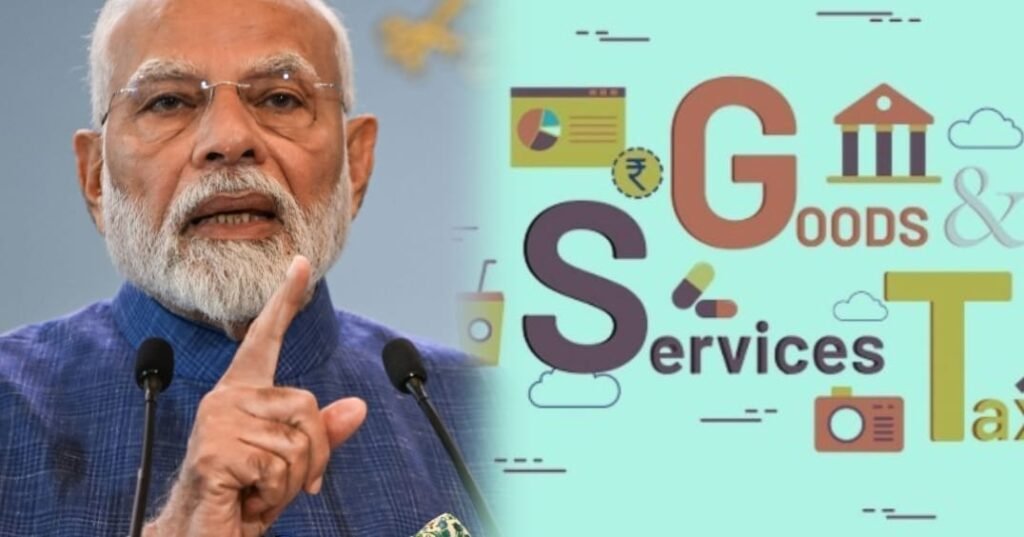
New Delhi: In a landmark move, the Narendra Modi government has overhauled the Goods and Services Tax (GST) structure, replacing the existing multi-slab regime with just two simplified rates — 5% and 18%. The reform, hailed as one of the biggest tax simplifications since GST’s launch, is aimed at enhancing transparency, easing compliance, and providing direct relief to businesses and consumers.
“The earlier complex structure had become a burden for small traders and industrialists. The new two-slab system simplifies taxation, supports entrepreneurship, and makes the tax regime more citizen-friendly,” a senior finance ministry official said.
Relief for small industries and traditional sectors
Small-scale industries across India are among the biggest beneficiaries of the new GST structure. In Karnataka, iconic products like Mysore silk, Ilkal and Molakalmuru silks will now attract a 5% tax. The world-famous Channapatna and Kinnal toys have moved down from 12% to 5%, while traditional sweets like Mysore Pak and Dharwad peda are set to become cheaper.
Agricultural products such as cardamom, black pepper, coffee, oranges, pomegranates, Nanjangud rasabale, Kamalapur red bananas, and Indi lemons will also be taxed at 5%, bringing cheer to planters and farmers. Similarly, Bidar’s Bidriware, Mysore rosewood inlay, and Ganjifa cards will enjoy reduced tax rates, boosting local artisans.
Widespread benefits across states
In Jammu & Kashmir, the reform benefits the horticulture, walnut, cherry, and saffron industries, helping farmers fetch better prices.
In Himachal Pradesh, Kangra tea, black cumin, Kullu shawls, and Kangra paintings will attract 5% GST, empowering local artisans.
Uttarakhand’s famed bay leaves, Munsyari rajma, Nainital lychees, and handicrafts will also benefit from the reduced rate.
In Jharkhand, traditional tribal products such as Sohrai-Khovar paintings, Dokra art, Tassar silk, and Mahua goods will now carry only 5% tax.
Tamil Nadu’s textile industry and unique local products such as Virupakshi hill bananas, Erode turmeric, Thanjavur paintings, and Arumbavur wood carvings will benefit from lower taxation, enhancing their competitiveness.
Chhattisgarh’s Bastar iron craft, Dokra art, and Champa silk sarees will enjoy similar relief.
In Kerala, products like Alleppey green cardamom, Malabar black pepper, Wayanad coffee, and coir goods now fall under the 5% bracket.
In Andhra Pradesh, Guntur Sannam chili, Tirupati laddoo, Kondapalli bommala, and Etikoppaka toys will see lower prices, expected to drive demand and create new jobs.
In Puducherry, Villianur terracotta and Thirukannur papier-mâché crafts will now be cheaper.
Maharashtra’s famous Kolhapuri chappals, Paithani sarees, Warli paintings, Nagpur oranges, and Alphonso mangoes have also been included in the 5% slab. Lower costs in the automobile and food processing sectors are expected to boost investment and employment.
Punjab and Haryana have seen GST reductions on Phulkari textiles, dairy products, spices, tractors, and solar equipment, benefiting both rural and industrial sectors.
Odisha’s silver filigree, Dokra crafts, and processed foods are now cheaper, while Goa’s cashew and khaje industries have also gained from the 5% slab.
Boost to exports, Make in India
The reform is expected to energize exports and reduce production costs in key sectors such as textiles, gems and jewellery, electronics, and agriculture.
Gujarat’s textile and diamond industries are projected to gain significantly, with increased competitiveness in global markets.
Officials said the reform aligns with the Prime Minister’s “Make in India” and “Atmanirbhar Bharat” vision, ensuring balanced growth across states.
A step toward inclusive growth
The GST simplification, which also benefits women’s self-help groups and MSMEs in Bihar and Uttar Pradesh, reinforces the government’s focus on inclusive economic development.
Overall, the two-slab GST reform is being described as a major stride towards Prime Minister Modi’s vision of “Sabka Saath, Sabka Vikas, Sabka Vishwas, and Sabka Prayas” — a simpler, transparent, and equitable tax regime that strengthens India’s economic foundation.
